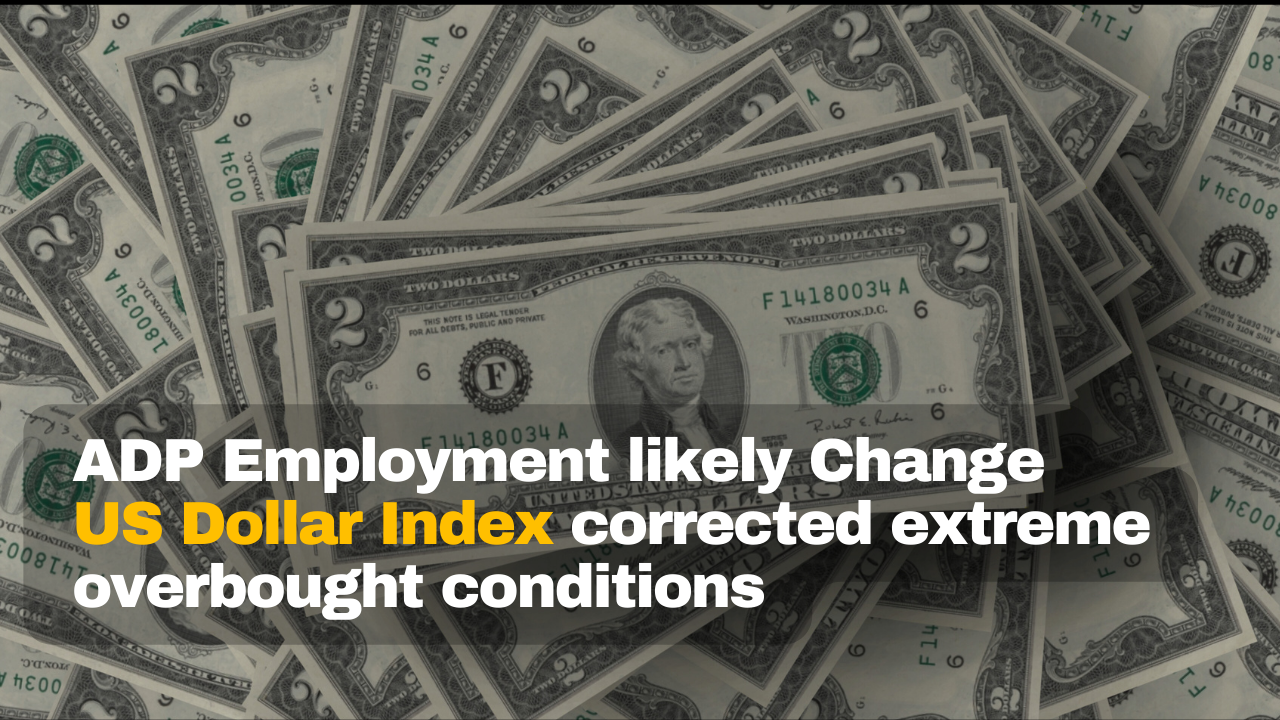
ADP Employment likely Change, US Dollar Index corrected extreme overbought conditions
ADP Employment Change likely to signal cooling job market without shaking Fed’s rate cut plans
- ADP Employment Change is probably a symptom of a softening labor market, but it won’t affect the Fed’s plans to decrease interest rates.
- It is anticipated that the private sector in the United States added 139,000 new jobs in December.
- The US Dollar Index maintained its positive outlook after correcting for severe overbought conditions.
The macroeconomic calendar begins to fill up as financial markets gradually resume their activities following the Christmas break. The United States (US) and President-elect Donald Trump’s proposed tariffs have been the center of attention lately. In the lack of pertinent facts, market sentiment has taken the lead, oscillating between optimism and pessimism on the potential impact of the new US administration on the world economy.
However, US employment is becoming the main focus. The December Employment Change report, which calculates the amount of new employment generated by the private sector, will be made public by the ADP Research Institute on Wednesday. It is important to keep in mind that the official Nonfarm Payrolls (NFP) report is usually released two days after the ADP report. Many people consider the ADP statistics to be a sneak peek of the jobs report from the Bureau of Labor Statistics (BLS). But over time, the relationship between the two has shown itself to be erratic.
Employment growth and its role in shaping Fed policy
As one of the two pillars of the Federal Reserve’s (Fed) dual mandate, employment is crucial. The US central bank should aim for maximum employment and price stability. In the second quarter of 2024, as inflationary pressures subsided, attention briefly turned to employment since a robust labor market in some way presented a risk to inflation.
However, following the 2024 presidential race, inflation came back into the spotlight. In a few days, former President Donald Trump will return to the White House as the 47th president of the United States after winning the race. In addition to his victory, the Republican Party took control of Congress and now holds a majority in both chambers.
The Fed has taken a more cautious approach to interest rate decreases as a result of concerns that Trump’s policies may lead to new inflationary pressures. To reach a total of 100 basis points (bps) in 2024, the Fed first lowered the benchmark interest rate in September and then again in November and December. However, using the Summary of Economic Projections (SEP) or dot plot, US policymakers predicted during the December monetary policy meeting that interest rate cuts would decelerate this year, with only two possible reductions in 2025.
Right now, it doesn’t appear likely that the ADP report or even Friday’s upcoming NFP report will change the outlook for two small rate decreases. The central bank’s position is rarely impacted by one-month data alone. Only in June do the odds for an interest rate drop outweigh those for an on-hold decision, according to the CME FedWatch Tool. ADP figures will likely be interpreted cautiously in light of this.
How might the USD Index be impacted by the ADP Report, and when will it be released?
On Wednesday at 13:15 GMT, the ADP Employment Change report for December will be made public. After adding 146K jobs in November, it is anticipated that the US private sector will add 140K new positions.
Prior to the announcement, the US Dollar Index (DXY) has dropped from a multi-year high of 109.56 recorded on January 2 and is currently trading at about 108.00. Given that the Federal Open Market Committee (FOMC) will issue the December meeting minutes later in the day, a reading that is in line with expectations shouldn’t affect the DXY. In the hopes that it will provide some hints about future monetary policy actions, speculation will probably wait for the paper.
A positive number would indicate a more robust labor market, which would keep the Fed on the hawkish side. Consequently, the US Dollar Index ought to recover its dominant strength. However, the reverse situation won’t be as simple. Even a bad report won’t increase the likelihood that interest rates will be lowered soon. The news may cause the DXY to drop right away, but the drop is probably only going to last a short while.
Technically speaking, the US Dollar Index (DXY) corrected overbought conditions in the daily chart, with the bearish trend losing momentum, according to Valeria Bednarik, Chief Analyst at FXStreet. A bullish 20 Simple Moving Average (SMA) offers dynamic support around about 107.90 within the specified time frame, drawing buyers for a second day in a row. Meanwhile, technical indicators are showing signs of waning purchasing activity by flattening above their midlines.
Bednarik adds: “Buyers will likely take their chances on dips, with immediate support at 107.74, the December 30 intraday low. Additional slides may see DXY falling towards 107.18, the December 13 high, with a break below 107.00 unlikely with the ADP release. Initial resistance lies at 108.55, the December 20 intraday high, with gains beyond the latter exposing the aforementioned 109.56 multi-year high.
What is the US dollar?
In addition to being the official currency of the United States of America, the US dollar (USD) is also the “de facto” currency of many other nations, where it is used in conjunction with local money. According to figures from 2022, it is the most traded currency in the world, making up over 88% of all foreign exchange activity worldwide, or an average of $6.6 trillion in transactions daily. The US dollar replaced the British pound as the world’s reserve currency after World War II. Before the Bretton Woods Agreement in 1971, when the Gold Standard was abolished, the US dollar was supported by gold for the majority of its existence.